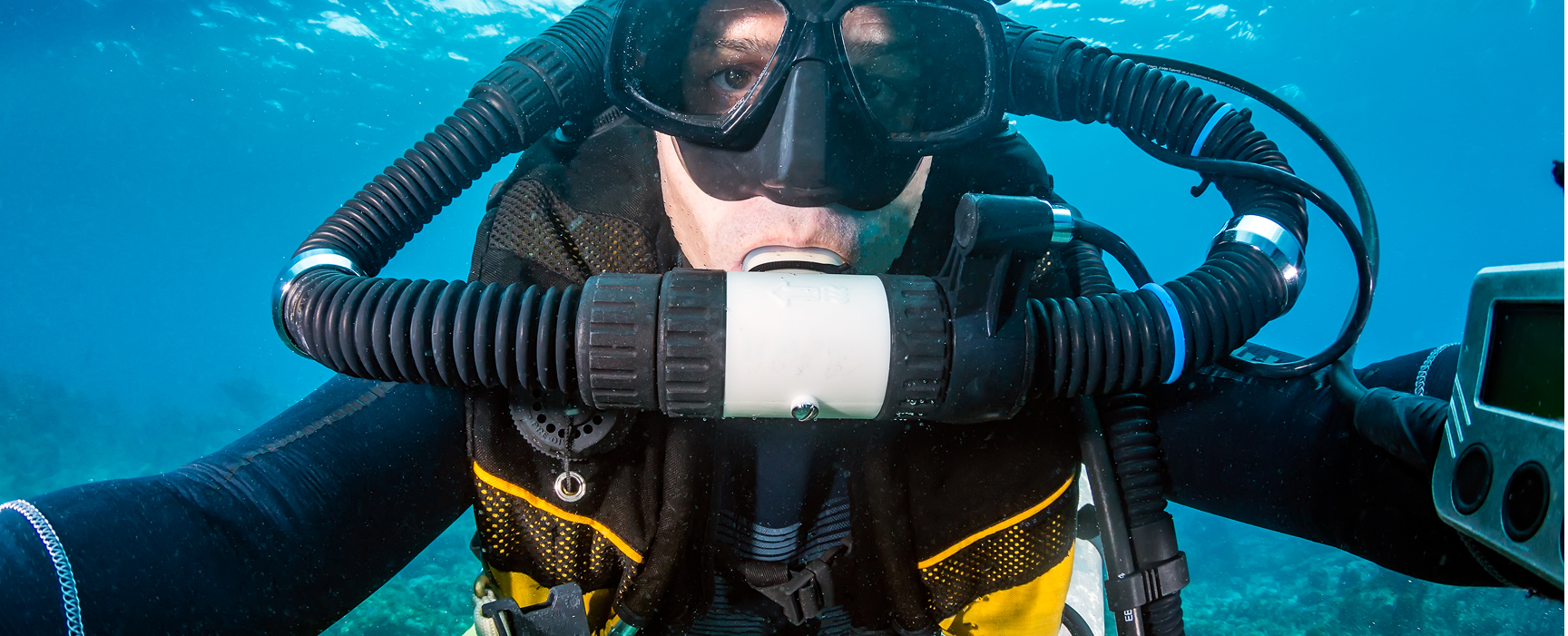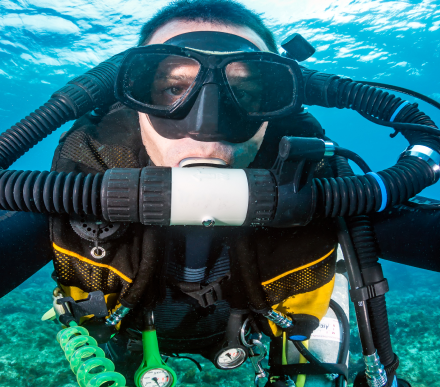Why Switch to a Rebreather?
- Longer dives – recycled gas means hours, not minutes, at depth.
- Zero bubbles – perfect for photography, research, and shy marine life.
- Precise buoyancy – micro‑adjust O2 for fingertip control in tight spaces.
- Gas efficiency – carry a fraction of the cylinders required for deep or deco dives.
Rebreather Systems We Teach
Hollis Prism 2
Front‑mounted counterlungs, 5.5 lb radial scrubber, Shearwater Petrel electronics
KISS Spirit LTE / Orca Spirit
40 lb travel weight, bi‑axial scrubber, customizable BC
KISS Classic
Proven durability since 1999, protected counterlung case
Unsure which unit fits your goals? Book a free pool tryout and breathe on each CCR before you decide.
Training Overview
FAQ – Rebreather Training
How does a rebreather work?
A CCR forms a closed loop: you exhale into the unit, a scrubber removes CO2, sensors monitor O2, and the system adds fresh oxygen to keep the mix breathable—letting you dive longer without bubbles.
Can I try a CCR before committing to the course?
Yes. Schedule a rebreather tryout in our heated pool to feel the loop, test the buoyancy, and chat one‑on‑one with our CCR instructors.
Why train with Scuba Schools of America?
With 62 years of teaching history, an on‑site salt‑water pool, and fully insured SSI professionals, SSA delivers small‑ratio, quality‑first instruction backed by lifetime pool access for practice.








